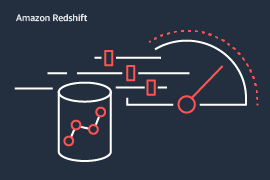AWS Big Data Blog
Category: Amazon Redshift
Federate Amazon Redshift access with Microsoft Azure AD single sign-on
December 2022: This post was reviewed and updated for accuracy. February 2nd, 2022: This blog was updated by Kay Lerch. Recently, we helped a large enterprise customer who was building their data warehouse on Amazon Redshift, using Microsoft Azure Active Directory (Azure AD) as a corporate directory. Their requirement was to enable data warehouse users […]
Achieve finer-grained data security with column-level access control in Amazon Redshift
September 2023: This post was reviewed for accuracy. Amazon Redshift is the most popular cloud data warehouse because it provides fast insights at a low cost. Customers can confidently run mission critical workloads, even in highly regulated industries, because Amazon Redshift comes with out of the box security and compliance. The security features, combined with […]
Speed up your ELT and BI queries with Amazon Redshift materialized views
The Amazon Redshift materialized views function helps you achieve significantly faster query performance on repeated or predictable workloads such as dashboard queries from Business Intelligence (BI) tools, such as Amazon QuickSight. It also speeds up and simplifies extract, load, and transform (ELT) data processing. You can use materialized views to store frequently used precomputations and […]
Accelerate Amazon Redshift Federated Query adoption with AWS CloudFormation
Amazon Redshift Federated Query allows you to combine the data from one or more Amazon RDS for PostgreSQL and Amazon Aurora PostgreSQL databases with data already in Amazon Redshift. You can also combine such data with data in an Amazon S3 data lake.
Build a Simplified ETL and Live Data Query Solution using Redshift Federated Query
You may have heard the saying that the best ETL is no ETL. Amazon Redshift now makes this possible with Federated Query. In its initial release, this feature lets you query data in Amazon Aurora PostgreSQL or Amazon RDS for PostgreSQL using Amazon Redshift external schemas. Federated Query also exposes the metadata from these source databases through system views and driver APIs, which allows business intelligence tools like Tableau and Amazon Quicksight to connect to Amazon Redshift and query data in PostgreSQL without having to make local copies.
Improved speed and scalability in Amazon Redshift
Amazon Redshift delivers fast performance, at scale, for the most demanding workloads. Getting there was not easy, and it takes consistent investment across a variety of technical focus areas to make this happen. This post breaks down what it takes to build the world’s fastest cloud data warehouse.
Speeding up Etleap models at AXS with Amazon Redshift materialized views
The materialized views feature in Amazon Redshift is now generally available and has been benefiting customers and partners in preview since December 2019. One customer, AXS, is a leading ticketing, data, and marketing solutions provider for live entertainment venues in the US, UK, Europe, and Japan. Etleap, an Amazon Redshift partner, is an extract, transform, […]
Lower your costs with the new pause and resume actions on Amazon Redshift
Today’s analytics workloads typically require a data warehouse to be available 24 hours a day, 7 days a week. However, there may be times when you need an Amazon Redshift cluster for a short duration of time at frequent (or infrequent) intervals. For example, you may run a periodic ETL job or use a cluster […]
Analyze your Amazon S3 spend using AWS Glue and Amazon Redshift
The AWS Cost & Usage Report (CUR) tracks your AWS usage and provides estimated charges associated with that usage. You can configure this report to present the data at hourly or daily intervals, and it is updated at least one time per day until it is finalized at the end of the billing period. The […]
Amazon Redshift at re:Invent 2019
The annual AWS re:Invent learning conference is an exciting time full of new product and program launches. At the first re:Invent conference in 2012, AWS announced Amazon Redshift. Since then, tens of thousands of customers have started using Amazon Redshift as their cloud data warehouse. In 2019, AWS shared several significant launches and dozens of […]









